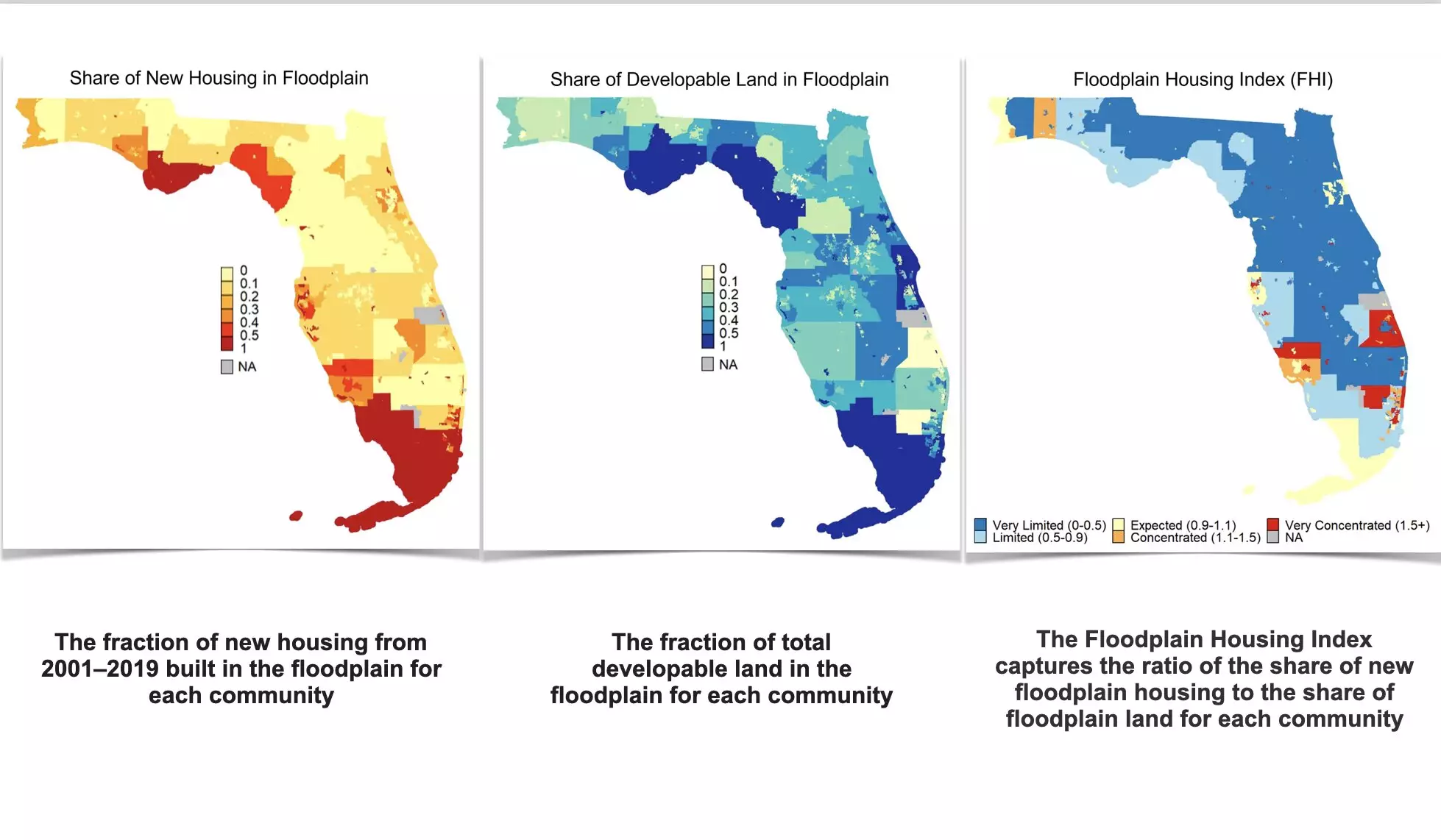Recent research conducted by scientists at the University of Miami’s Rosenstiel School of Marine, Atmospheric, and Earth Science sheds light on a pressing issue that intertwines urban development and environmental vulnerability. Over the past 20 years, more than two million acres of floodplain have been developed in the United States, signaling a growing risk for communities, especially in flood-prone regions like the Southeastern U.S. This article delves into the findings of this pivotal study, exploring both the alarming trends in floodplain housing and the implications for future urban planning.
The study revealed that approximately 840,000 new residential properties were constructed in floodplains across the U.S., with Florida contributing a staggering 398,000 of that total—representing 21% of all new housing within that state. While these figures might not appear alarming at first glance, the context paints a more serious picture. According to lead researcher Armen Agopian, a Ph.D. student at the Rosenstiel School, the total amount of floodplain development is understated relative to what would be expected if housing was distributed in proportion to the land available. For example, if Florida’s floodplains were adequately accounted for, it would be reasonable to anticipate that around 40% of new housing was being built there.
This discrepancy raises critical questions about the planning and regulatory frameworks guiding floodplain development. It suggests that many communities are either managing to avoid development in these high-risk areas or are implementing strategies that limit further encroachment into flood zones.
One of the most significant aspects of the study is its examination of local government regulations. It found that 74% of communities across the United States are limiting new developments within floodplains. Furthermore, 87% of locales have enacted measures to curb new housing in these areas. This trend indicates a growing awareness and proactive approach among many municipalities towards managing flood risks and protecting residents.
Interestingly, the study highlights a contrast between coastal communities and their inland counterparts. Coastal areas, usually more susceptible to flooding, have shown a greater tendency to concentrate new housing developments in flood-prone regions, which raises concerns about resilience and preparedness for potential disasters. This concentration of development in high-risk areas could increase the likelihood of significant harm during extreme weather events.
Another critical finding from the research is the impact of the Federal Emergency Management Agency’s (FEMA) Community Rating System (CRS). Communities that participate in this program, aimed at incentivizing better floodplain management by offering discounted flood insurance rates, tend to demonstrate a higher propensity for floodplain development. While participation in the CRS suggests an awareness of flood risks, Agopian points out that participation alone is insufficient. Communities need to not only enroll in the CRS but also improve their floodplain management practices to truly mitigate risks associated with floodplain development.
This insight calls for a comprehensive examination of how certain floodplain management practices can be enhanced, thereby translating participation into tangible safety measures and risk reduction.
The critical reflection that emerges from the study is the recognition of communities that have effectively avoided developing within flood-plagued environments. Senior author Katharine Mach emphasizes the importance of understanding these success stories—often unnoticed—where communities have taken advances to safeguard against potential flooding issues.
By identifying and analyzing these proactive measures, policymakers and urban planners can glean insights that may contribute to more sustainable and resilient future developments, avoiding the pitfalls of floodplain encroachment that have afflicted numerous areas.
In summation, the comprehensive dataset provided by this study brings to light crucial information needed for informed decision-making concerning floodplain development across the United States. As climate change exacerbates the threat of flooding, the necessity for effective urban planning and local regulation becomes more pronounced. It serves as a call to action—not only for Florida but for communities nationwide—to refine development strategies that respect natural floodplain boundaries and prioritize the safety and resilience of their residents. By learning from the communities that have successfully navigated these challenges, we can forge a path toward safer, smarter development that mitigates the risks associated with flooding while also preserving vital ecological systems.


Leave a Reply